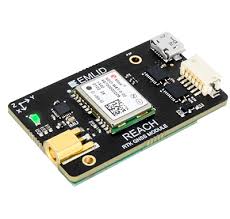How to install ddclient on Emlid Reach

You want to cast RTCM3 corrections with your Emlid Reach RTK GPS through internet but don't know how to do it ? Most simpliest configuration will be to use ddclient. Ddclient takes your current ip and diffuse it to a most common name like my.rtk (doesn't exist ;-) website. First I'm talking about this one (don't know about new one with plastic case because it doesn't use intel edison anymore) : Then you have to connect to reach with ssh : username : root password : emlidreach Download ipk package from official Intel Edison : wget http://repo.opkg.net/edison/repo/core2-32/ddclient_3.8.3-r0_core2-32.ipk Update database : opkg update Install package : opkg install ddclient_3.8.3-r0_core2-32.ipk Wait, it will download dependencies packages. An that's it ! Enable service at boot : systemctl enable ddclient For configuration I have some ovh servers and a domain name (giscan.com) so I use this guide to update my ip to easily find my ...

